#85 mm 1.2
Text
Ultra High Precision Ceramic Ring Gauges Ceramic Setting Ring
Innovacera developed a series of ceramic accessories for Inside Micrometers, Holtest and Dial Bore Gages. The ceramic material used mostly is zirconia.
The zirconia ceramic setting ring advantages:
- High wear resistance and long service life
- The coefficient of thermal expansion is very small, the effect of temperature is very small
- The hardness is very high, there is no need to worry about surface scars.
- Ring gauge management is simple (regular inspection interval is long, saving cost).
The Zirconia Ceramic Ring Gauges Technology:
Surface Roughness: Not more than Ra0.1um
Straight Angle: 0.05/φ100
Parallelism: Not more than0.015mm
Each 0.5mm as one size, from 1mm to 50mm.
Size
Dimensional interval
Roundness
Outer diameter tolerance:
Inner diameter tolerance
Hardness
1-29mm
0.5mm
0.5um
±1um
±1um
1200HV
30-50mm
0.5mm
0.8um
±1.6um
±1.5um
1200HV
Some Zirconia Ceramic Ring Gauges Innovacera made and size detail:
9mm, 10mm, 18mm, 20mm, 24mm, 25mm, 28mm
D(mm)
d(mm)
T(mm)
outer chamfer(mm)
inner chamfer(mm)
1-2
22
4
0.4
0.3
2.5-4.5
22
5
0.4
0.3
5-9.5
32
8
0.8
0.5
10-14.5
38
10
1.2
0.5
15-19.5
45
12
1.2
1.0
20-24.5
53
14
1.2
1.0
25-31.5
63
16
1.5
1.0
32-39.5
71
18
2.0
1.0
40-50
85
20
2.0
1.0

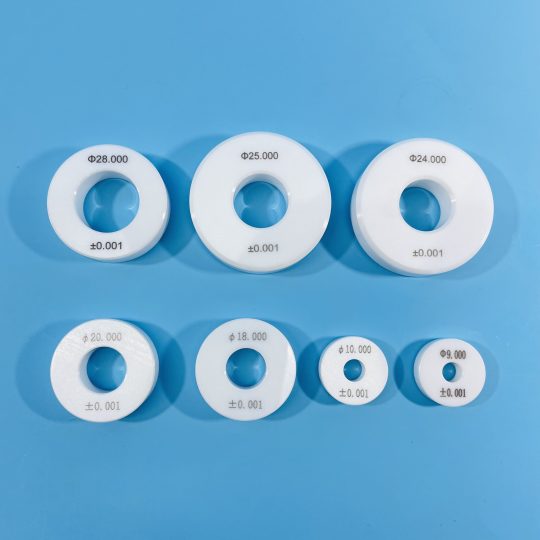
Read the full article
0 notes
Text

Cyndel // Dec 2019
#photography#black and white#portrait#photo#photographer#blackandwhitephotography#art exhibition#model#beauty#canon#85 mm 1.2
0 notes
Note
Hi Alisa! I know you use the Canon RF 50mm f1.2 lens. For your photography, what's your opinion on the Canon RF 28-70mm f2?
I had no experience with this lens and cannot judge its quality, but I used 24-70 2.8 and I liked it, especially if there is enough lighting (2.8 is dark :( 2.0 is definitely better) The zoom is convenient so as not to change a lot lenses during shooting. (now I have 35 мм 1.4, 50 мм 1.2, 85 mm 1.2)
4 notes
·
View notes
Photo

#nature : Federica by Andrea_Rm http://ift.tt/2xrSV54
2 notes
·
View notes
Text

• Hotchkiss H35
The Hotchkiss H35 or Char léger modèle 1935 H was a French cavalry tank developed prior to World War II. The Hotchkiss H35 was adopted in 1936 by the French Cavalry arm.
In 1926, it had been decided to provide armour support to the regular infantry divisions by creating autonomous tank battalions equipped with a light and cheap infantry tank, a char d'accompagnement. In 1933, the Hotchkiss company under its own initiative presented a plan to produce a design. This was made possible by the application of a new technology to produce cast steel sections to construct an entire hull. On June 30th, 1933, this proposal was approved by the Conseil Consultatif de l'Armement. On August 2nd, 1933 the specifications were issued: a weight of 6 long tons (6.1 t) and 30 mm (1.2 in) armour protection all around. Three prototypes were ordered from Hotchkiss, but the French industry as a whole was also invited to provide alternative proposals for a nouveau char léger. On January 18th, 1935, the first Hotchkiss prototype, not yet made of armour steel, was presented to the Commission d'Expérience du Matériel Automobile (CEMA) at Vincennes; it was a machine gun-armed tankette without turret. It was tested until 4 March 1935, when it was replaced by the second identical prototype to be tested until May 6th. Both had to be rejected because new specifications had been made on June 21st, 1934 that increased the desired armour thickness to 40 mm (1.6 in).
On August 19th, the third prototype was delivered, equipped with a cast APX turret and featuring a redesigned hull; it was tested until September 20th and accepted. On November 6th, 1935 a first order was made for 200 vehicles. Though it should have been completed between July 1936 and July 1937, the first production vehicle was in fact delivered on September 12th, 1936. A first additional orders had already been made of 92 on September 7th, 1936, to be completed in November 1937. A third one of 108 vehicles followed in January 1937, to be completed in September 1938. By January 1st, 1937 132 hulls had been produced. None of these had at that date yet been fitted with a turret. The first series vehicle was again extensively and intensively tested until 4 December 1936. The testing soon showed that its cross-country handling qualities were unacceptably poor. It was simply impossible to safely steer the vehicle on a somewhat bumpy surface, posing an extreme danger to nearby friendly infantry. The Infantry therefore initially rejected any further procurement. Eventually, in 1937, it decided to accept only the last hundred tanks to equip just two battalions with the type. For political reasons however, stopping production of the tank was unacceptable. As a result the first three hundred vehicles of the production run were offered to the Cavalry, which was forced to accept them because it would not have been granted a budget for other tanks anyway. The H 35 was, at 28 km/h (17 mph), also somewhat faster than the Renault R35, which was capable of 20 km/h (12 mph), although in practice its average speed was lower than that of the R 35 because of its inferior gear box.
The Hotchkiss H35 was a small vehicle, 4.22 m (13.8 ft) long, 1.95 m (6.4 ft) wide and 2.133 m (7.00 ft) tall and weighing 10.6–11.37 t (10.43–11.19 long tons). The hull consisted of six cast armour sections, bolted together: the engine deck, the fighting compartment, the front of the hull, the back of the hull and two longitudinal sections left and right forming the bottom. The hull was made water-tight by cementing these sections together with Aslic, a product based on tar mixed with lime. The casting allowed for sloped armour, avoiding shot traps, to optimise the chance of deflection but the protection levels did not satisfy the Infantry. Maximum armour thickness was not the specified 40 mm (1.6 in) but 34 mm (1.3 in). There were persistent quality problems, worsened by the fact that many subcontractors had to be used: at first the armour was made much too soft; when hardness was increased it became brittle and hence developed weak spots. There was a crew of two. The driver sat at the right front, behind a large cast double hatch and next to the combined gearbox and steering unit. Behind him was a round escape hatch in the bottom of the hull. Driving the vehicle was very hard work. The Hotchkiss lacked the Cleveland differential ("Cletrac") of its Renault competitor, and it responded unpredictably to changes of direction. The brakes could not sufficiently compensate for this, being too weak, especially when driving down-slope.
No less troublesome was the gearbox: it was difficult to engage the highest fifth gear and so the theoretical top speed of 27.8 km/h (17.3 mph) was rarely reached. There was one reverse gear. The inevitable rough handling of the tank by the driver resulted in much wear and tear. Mechanical reliability was poor. The suspension consisted of three bogies per side—each formed of two bell cranks arranged as "scissors" with springs at the top. Each bogie carried two rubber-rimmed wheels. The bogies superficially resembled the R35 type, but used horizontal helical springs instead of rubber cylinders. The sprocket was at the front, the idler which itself was sprung to automatically control tension at the rear. There were two top rollers. The tank was powered by a 78 hp six-cylinder 86 x 100 3485 cc engine which was on the left of the engine compartment. A 160-litre fuel tank on the right, combined with a twenty litres reserve reservoir, gave a range of 129 km (80 mi) or eight hours on a varied terrain. Also a cooling fan drew air through the radiator and was also expected to cool the fuel tank. The trench-crossing capacity was 1.8 m (5.9 ft), the wading capacity 85 cm (33 in). The APX-R turret was the same standard type as used on the R35 and R40 tanks, made of 40 mm (1.6 in) cast steel and armed with the short 37 mm SA 18 gun, which had a maximum armour penetration of only 23 mm (0.91 in). Traverse of the turret was with a handwheel. The commander sat in a saddle suspended from the turret. The tank carried about 100 rounds for the gun, and 2,400 rounds for the coaxial 7.5 mm Reibel machine gun – the 37 mm ammunition racked on the left hand side of the hull, the 7.5 mm ammunition on the right side in fifteen circular magazines with 150 rounds each; a final magazine was to be at the ready on the machine-gun itself.
For access there was a hatch at the back of the turret. When opened, the commander could sit on it for better observation, but this left him very vulnerable and slow to reach the gun. The alternative was to fight closed-up, observing through the vertical slits or the visor of the hatchless cupola. The Cavalry liked neither this arrangement nor the weak gun. The latter problem was lessened somewhat by enlarging the breech so that special rounds with a larger charge could be used. This increased muzzle velocity to about 600 m/s (2,000 ft/s) and maximum penetration to about 30 mm (1.2 in). In the Spring of 1940 the original diascopes of the Chrétien type were gradually replaced with episcopes, offering more protection.
In the Cavalry arm, the main user at first, the Hotchkiss tanks replaced as main combat tanks the light AMR 33 and AMR 35 vehicles, that for want of a better type had been used to form the bulk of the first two Cavalry armoured divisions. As the new medium SOMUA S35 was initially produced in very limited numbers, until early 1939 the Hotchkiss equipped three of the four divisional tank regiments. In April 1940 the 342e CACC (Compagnie Autonome de Chars de Combat or "Independent Tank Company") was sent to Norway after Operation Weserübung, the German invasion of that country, having first been intended to form part of an expeditionary force to assist Finland in the Winter War. This autonomous company, equipped with fifteen Char léger modèle 1935 H modifié 39, all with short guns, fought in the later phase of the Battles of Narvik, after having landed on May 7th. According to the official army acceptance lists, at the start of World War II 640 Hotchkiss tanks had been delivered. The inventories deviate slightly: of the 300 H35s allocated to the Cavalry, 232 were fielded by ten cavalry squadrons, 44 were in depot, eight in factory overhaul and sixteen in North Africa. Of the H39s, sixteen were used by the Cavalry in North Africa and six in depot; 180 were fielded by four Infantry tank battalions and fourteen were in the Infantry matériel reserve. It was decided to concentrate most Allied production capacity for light tanks into the manufacture of a single type, and the Hotchkiss tank was chosen as it had the necessary mobility to be of use in the many armoured divisions the Entente planned to raise for the expected decisive summer offensive of 1941. To this end British and Portuguese heavy industry had to assist in producing the cast armour sections. It was hoped to increase production to 300 a month in October 1940, and even 500 a month from March 1941, the sections of 75 of which to be provided by Britain in exchange for a monthly delivery of nine Char B1s.
These plans were disrupted by the Battle of France. In May 1940 the type equipped in the Cavalry units two tank regiments (of 47) in each of the three Mechanised Light Divisions and served as AMR in the 9th and 25th Mechanised Infantry Division. Furthermore, sixteen vehicles were part of the 1er RCA in Morocco. In the Infantry it equipped the two autonomous battalions mentioned above and two battalions of 45 in each of the three Divisions Cuirassées, the latter with the H39 variant. Most Hotchkiss tanks were thus concentrated in larger motorised units, in the armoured divisions supplementing the core of heavier tanks, though they were mismatched. Following the French defeat in the Battle of France about 550 Hotchkiss tanks were captured and used by the Germans as Panzerkampfwagen 35H 734(f) or Panzerkampfwagen 38H 735(f); most for occupation duty. Like the French, the Germans made no clear distinction between a H38 and a H39; and fitted many with a cupola with a hatch. Panzer-Abteilung 211 was deployed in Finland during Operation Barbarossa, equipped with Hotchkiss tanks. In 1944, three of its vehicles were converted to 7.5 cm self-propelled guns. German H35/39s also saw action in Yugoslavia with 7.SS-Freiwilligen-Gebirgs-Division "Prinz Eugen", 12. Panzer-Kompanie z.b.V. and I./Panzer-Regiment 202. In 1942 a project was launched to make use of French equipment as carrier platforms for heavier guns, directed by Major Alfred Becker, an artillery officer who was a mechanical engineer by trade. He had experience making similar conversions with captured Belgian and British vehicles. Some vehicles were modified into munition carriers or artillery tractors (Artillerieschlepper 38H(f)) or rocket-launchers (Panzerkampfwagen 35H(f) mit 28/32 cm Wurfrahmen). In June 1943, 361 Hotchkiss tanks were still listed in the German Army inventories as 37 mm gun tanks; this number had decreased to sixty in December 1944.
Three Hotchkiss tanks of the "H39" version had been exported by France to Poland in July 1939 for testing by the Polish Bureau of Technical Studies of Armoured Weapons, with a view to a larger purchase. During the German invasion of Poland in 1939 the Hotchkiss tanks, together with three Renault R 35 tanks, were organised into an ad hoc "half company" unit under lieutenant J. Jakubowicz, formed on September 14th, 1939 in Kiwerce, Poland. The unit joined the "Dubno" task force and lost all of its tanks during the marches and fighting against German and Soviet armies, due to fuel shortages. In North Africa, 27 vehicles (thirteen H35 and fourteen H39) were officially serving in the 1e Régiment de Chasseurs d'Afrique and were allowed to remain there by the armistice conditions; another five were hidden in Morocco. They fought the Allies during the opening stages of Operation Torch, the Allied invasion of French North Africa, near Casablanca in November 1942, destroying four M3 Stuart light tanks. The regiment then joined the allied cause and was re-equipped with M4 Sherman medium tanks in the summer of 1943. After the war, some Hotchkiss tanks were used by French security forces in the colonies, such as French Indochina, and occupation forces in Germany. Ten H39s were clandestinely sold to Israel, they were shipped from Marseilles to Haifa in 1948.
One Hotchkiss H35 and nine Hotchkiss H35s modifié 39 have survived to this present day, all of the modifié 39 were further modified by the Germans during World War II.
#second world war#world war 2#world war ii#french history#french tanks#tank history#tank warfare#tanks#military equipment#military history#ww2#wwii
93 notes
·
View notes
Text
Honda Phantom Ta200 Service Manual

Honda Phantom Ta200 Service Manual Download
Honda Phantom Ta200 Service Manual 2016
Honda Phantom Ta200 Specification
Honda Phantom Ta200 Workshop Manual
Service Manual: The Honda Phantom TA200 is a single cylinder Thai-made 'chopper' motorcycle. It is known in Australia as the TA Shadow. Overall design is very similar to the Honda TA150. The major differences are that the TA200 contains a 4 stroke engine and higher engine displacement. View and Download Honda 86-87 TA200 FATCAT service manual online. 86-87 TA200 FATCAT motorcycle pdf manual download. Hi, Vk6cba166 for this scenario you will need your service manual, parts fiche, and owners manual if you can't find the best tool you ever bought for your Honda, despair not, for.
Question:
What are the recommended tyre (tire) pressures for my Phantom? {Sandy, Thailand 2008 Honda Phantom 200}
Answer:
The problem with locating information about this model is that it is not produced for the US or Canadian markets. At the time of this page’s creation, it appears to be sold in the Asian markets of Indonesia, Thailand and Singapore. So I am limited in what information I can find.
The Honda Phantom 200 is one of the most popular cruiser style bikes in Thailand. Its 200cc single cylinder engine delivers a surprising amount of power. It is extremely economical, reliable and comfortable to ride, with exceptional handling and braking. From what information I can locate it gets 35 km/l {about 85 mpg}.
It would probably be considered a Scooter in the US even though it is styled after a standard cruiser streetbike.
Here are the technical specifications I was able to locate for it.
Honda Asian Model Code: TA200
Engine Type: 4 stroke, SOHC
Volume Engine: 196.9 CC
Bore x Stroke: 63.5 x 62.2 mm
Cooling System: Air
Compression ratio: 9.0: 1
Transmission: 6 speed
Ignition system: CDI
Spark Plug: DPR8EA-9 (NGK) or X24EPR-U9 (DENSO)
Dimension (LxWxH): 775 x 2256 x 1085 mm
The wheel axis distance: 1505 mm
Empty weight: 140 kg
Suspension Front: Telescopic
Rear Suspension: Dual Rear Shock Absorbers
Brakes Front: Disc Brake (Dual piston caliper)
Rear brake: Disc Brake (Dual piston caliper)
Tires Front: 90 / 90 x 17 M / C Load Rating: 49P (tubeless)
Rear tire: 130 / 90 x 15 M / C Load Rating: 66P (tubeless)
Tank Capacity: 11.2 Liters
Electrical: MF 12 Volt – 4.5 Ah
Tire pressures are listed in the owner’s manual. If you do not have the manual for your Phantom 200, I would recommend the same thing that I recommend for most US scooter and motorcycle models. Inflate your tires to 5 lbs under the maximum tire pressure listed on the tire sidewall.
Need more free ATV or motorcycle repair information?
Q&A:
Leaking Fuel Valve?
Q&A:
Leaking Gas Valve
flooding engine?
Q&A:
Battery Maintenance
Q&A:
Battery Types
Q&A:
Carb Jetting page 1
Q&A:
Carb Jetting page 2
Q&A:
Aftermarket Exhaust System
Q&A:
Carb Float Needle
Q&A:
Carburetor Identification
Q&A:
Honda Points
Q&A:
Rim Bolt Pattern
Q&A:
CB750F Identification
Q&A: Broken Speedometer Cable End
Q&A:
Suzuki LT-Z400 QuadSport Tank
Removal
Q&A:Â Motorcycle Trike Conversion
Q&A:
Honda Rancher Reverse Problem
Q&A:
Kawasaki Z650SR Fuel Mix problem
Q&A:Â RM80 Piston Position
Q&A:Â LT80 Engine Oil Issues
Q&A:
Clutch Cable Break In period?
Q&A:
Cooling Fan Problem?
Q&A:
1983 XV920 Virago Oil Change
Q&A:
ATC90 Spark Plug question
Q&A:
Nighthawk 750 Spark Plug Gap
Q&A:
Bike Registration Problem
Q&A:
Lost Hypercharger Instructions
Q&A:
Bourget Charging System
Q&A:
Can Spark Plugs be cleaned?
Q&A:
Wheel Bearing Removal for 1976 CB750K
Q&A:
1982 YZ490 Kick Start
Q&A:
1979 GL1000 Goldwing Points Gap
Q&A: 1982 GS650GLZ
Cable Routing Problem
Q&A:
Ether vs. Carb Clean
Q&A:
ATV Ignition Trouble
Q&A:
John Deere backfiring
Q&A:
Honda Phantom 200 Tire Pressure
Honda Phantom Ta200 Service Manual Download
Rate the article:
(Пока оценок нет)
Loading...
Honda Phantom TA200ManufacturerHondaManualsService Manual
The Honda Phantom TA200 is a single cylinder Thai-made 'chopper' motorcycle. It is known in Australia as the TA Shadow.
Overall design is very similar to the Honda TA150. The major differences are that the TA200 contains a 4 stroke engine and higher engine displacement.
This motorcycle is very popular in Singapore due to it being one of the few cruisers available for a class 2B license (the most basic motorcycle license in Singapore). Class 2B license holders are only allowed to ride motorcycles with displacement below 200cc, and the Phantom TA 200 fits in nicely with a 197cc engine.
If purchased new Honda has a 3 year protection guarantee
1Specifications
Specifications
As taken from the Honda user manual:
Dimensions
Overall length2,260 mmOverall width730 mmOverall height1,100mmWheelbase1,505 mmGround clearance148 mm
Weight
dry weight140 kgMaximum load126 kg
Capacities
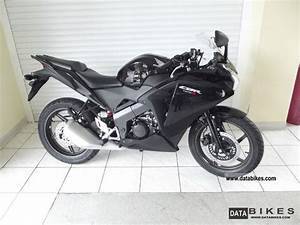
Engine oil (after draining)1.0 LEngine oil (after disassembly)1.2 LFuel tank11.2 LFuel reserve2.68 L
Engine
Bore and stroke63.5 x 62.2 mmCompression ratio9.0 : 1Displacement196.9 cm3Maximum power17,0 PS @ 8.000 RPMMaximum torque16,3 Nm (1,66 kgf.m) @ 6.500 rpm
General Fuel Consumption37km/l to 42km/l
Maintenance Recommendations
Engine oil ~ Maxima Extra, 1.2 L per 2000km
Spark plug ~ Change per 5000km
Air filter ~ Clean per 5000km. Change per 10000km
Brake Fluid ~ Change per 10000km. Top up if low level.
Cleaning the carburetor is discouraged unless you are a very competent mechanic.
Tune and clean only if problem arises. Under the fuel switch is a small bowl which can be cleaned to remove water or debris.
Brake Pads ~ Honda Original
Chain ~ DID
Lubricate per 500km (Scottoiler[1], Maxima Chain Spray or used engine oil)
Change when it can no longer be tightened
Sprockets ~ Usually change together with chain
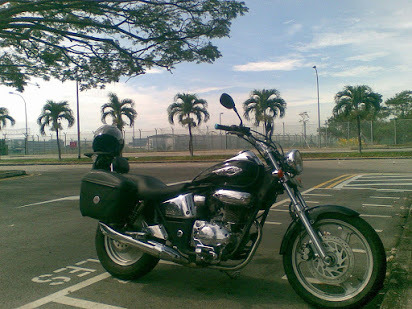
Tyres ~ Metzelers Lazertec Front, ME77 Back
When worn out or more than 5 years from manufactured date
When changing tyres, tell the mechanic to check wheel bearings as well
Full Servicing ~ per 5000km

Add-on recommendations
Crash Bar
Hazard Light Switch
Horn that is louder than the stock one
Honda Phantom Ta200 Service Manual 2016
Common problems
Skidding due to stock tyres which are unsuitable for urban roads
Skidding due to overpowered rear brakes
Checking engine oil level weekly is recommended
The Camchain tensioner on this motorcycle is a point of failure, please check this regularly or consider buying another machine as failure of this component will cause major engine damage requiring total rebuild of the top end including Pistons, Valves and expensive labor costs.
Honda Phantom Ta200 Specification
External links
Honda Phantom Ta200 Workshop Manual
Retrieved from 'https://www.honda-wiki.org/w/index.php?title=Honda_Phantom&oldid=4392'

1 note
·
View note
Text
Lupine Publishers | Spontaneous Pneumothorax and Cavitated Lesions as First Manifestation of Metastatic Lung Adenocarcinoma to Ovary and Peritoneum in Young Patient?

Lupine Publishers | Journal of Otolaryngology Impact Factor
Abstract
We present the report of a case of lung cancer of atypical manifestation with important challenges in its diagnosis in a young woman who came in with pneumothorax tension, cavitated lung lesions, ovarian, hepatic and peritoneal masses and a biopsy compatible with pulmonary adenocarcinoma, whose initial approach raised the differential diagnosis of a tumor of gynecological origin. A brief literature review was conducted.
Keywords: Pneumothorax; Pulmonary Cavitation; Pulmonary Adenocarcinoma; Ovarian Metastasis; TTF1
Introduction
A 28-year-old woman who consulted the emergency department of the National Cancer Institute (Instituto Nacional de Cancerología) for a 7-month history of asthenia, adinamia, progressive dyspnea, low cough, loss of 17 kilograms of weight and the appearance of a painful mass at the level of the iliac fossa and right flank. Initially studied as an outpatient with presumptive diagnosis of granulomatous disease with negative serial baciloscopy and chest x-ray showing right atelectasis + right pneumothorax. In the tomography multiple solid nodules some with hypodense center involving both pulmonary fields, caverns of thickened walls in both apices, posterior segments of the lower lobes and upper segments of the lower lobes. In the abdominal tomography there is presence of mass surrounding uterus of 185*100*85 mm of density of soft tissues, which takes the contrast IV and cystic area of 85 mm in its right aspect of probable ovarian origin and hepatic compromise with apparent peritoneal sowings. Positive tumor markers AFP 1.2, ACE 392, CA 125 257. A right thoracostomy, fibro bronchoscopy with cultures for M. negative tuberculosis and biopsy of pelvic mass that reported lesion characterized by cords and neuroglandular formation of epithelioid cells of neoplastic aspect with a marked desmoplasic response were initially performed. For which the diagnosis of metastatic ovarian cancer to lung, liver and peritoneum is made and send to initiate management.
Case Report
Upon admission to the institution, pulmonary thromboembolism is ruled out and extensive pulmonary parenchymatous involvement (Figure 1(a)) is confirmed by nodular areas, most of them with central cavitation and frosted glass halo, which are accompanied by paramilitary consolidations, making it necessary to consider neoplastic metastatic involvement with cavitation, less likely infectious (angioinvasive aspergillosis). At abdominal level, extensive infiltrative involvement of the peritoneum, hepatic subcapsular with extension to the parenchyma in segment 6, gastrohepatic ligament, transverse mesocolon, descending mesocolon. Heterogeneous bilateral adnexal masses of neoplastic aspect (Figure 1(b&c)). Scarce ascites. We reviewed pathology material of ovarian mass biopsy with report of adenocarcinoma with reactive immunopurified for CK7, TTF1 and negative for GATA 3, WT1, RE, CDX2, PAX 8 and CK20, we added NAPSIN which was positive, confirming lung metastatic origin (Figure 2(a&b)). The new fibro bronchoscopy with biopsy had immunohistochemistry that showed reactivity in tumor cells for TTF-1 and Napsin with absence of reactivity for p40, RE and RP. Compatible with compromise by non-small cell carcinoma, favors acinar pattern primary pulmonary adenocarcinoma. Less than 10% of all lung carcinomas debut with radiological cavitations, considered secondary to tumor necrosis by ischemia and/or bronchial obstruction [1]. Tokito et al. presented a cohort of lung cancer patients, with an incidence of cavitated lesions of 5.5% meanwhile in the Sing series this report is much higher near 9.6%. In both cohorts it was more frequent to find cavitations in men, over 60 years old, ex-smokers and with squamous cell histology [2].
Figure 1: (a) Chest X ray; (b) Axial computed tomography with extensive pulmonary parenchymatous involvement. (c) Computed tomography of the abdomen and pelvis with mass surrounding uterus.
Figure 2: (b) Immunohistochemistry of Napsine A in lung tissue; (b) Immunohistochemistry of TTF1 in ovarian tissue.
Figure 3 Chest X ray.
a greater extent induced by oncologic management are infection and hemoptysis, very infrequently, the presence of spontaneous pneumothorax which is estimated between 0.03 and 0.05% of primary lung cancer with a poor prognosis [3,4]. Among 1200 patients with spontaneous pneumothorax between 1970 and 2007, 37 (3%) had lung cancer. In all patients, the pneumothorax occurred on the same side of the carcinoma. The main cause of spontaneous pneumothorax was rupture of a necrotic tumor nodule or necrosis of subpleural metastases (21 ptes)., As well as the communication between the bronchus and the pleural cavity, producing a bronchopleural fistula that results in pneumothorax [5]. Spontaneous pneumothorax in the context of lung cancer occurs in 75% of cases as an initial manifestation and the remaining 25% during the course of the disease in patients with the known diagnosis, sometimes after the onset of management [6]. In this case, the first clinical manifestation of oncological disease was the presence of dyspnea secondary to spontaneous pneumothorax, infectious causes were ruled out and required surgical intervention with subsequent need for high oxygen flow. The main sites of lung cancer metastasis are pleura, brain, bone and liver. Ovarian metastases are rare, accounting for 5% of all ovarian cancers. The main tumors that metastasize to the ovary are from the gastrointestinal tract: colon and gastric, or originated in the breast. Lung cancer alone is the cause of these metastases by 0.3% [7]. The metastases of an adenocarcinoma of the lung are difficult to distinguish from a primary carcinoma of the ovary. Although there is no specific lung marker, TTF-1 can be used to discriminate between primary pulmonary and ovarian. TTF-1 is positive in approximately 63% of lung cancers [8]. Irving and Young reported 32 cases of metastatic to ovarian lung carcinoma in women aged 26 to 76. A history of lung carcinoma was documented in 53% of cases (17 out of 32), with detection of ovarian involvement at an interval of one year. In 10 cases (31%) ovary and lung occurred synchronously, in 5 (16%) ovarian tumors were detected 26 months before lung injury. The most frequent histologic subtype was small cell carcinoma 44%, adenocarcinoma in 34% and 16% in large cell carcinoma in 16% of patients. One third had bilateral presentation and the most frequent morphological characteristics were: multinodular growth, necrosis, lymphovascular invasion with rare involvement of the ovarian surface [9]. The management decision in this case was made considering the presence of pulmonary visceral crisis, the patient’s age, her ECOG and the high risk of rapidly deteriorating. Chemotherapy with palliative intention was started with carboplatin paclitaxel with a good clinical response in the two initial cycles, with which the requirement of supplementary oxygen and control of dyspnea was reduced. 40 days later, the patient was admitted with subite dyspnea of 3 days of evolution. with chest x-ray (Figure 3) that evidences left pneumothorax, ventilatory failure and dies despite rescue procedure.
Conclusion
Patients with cavitated tumors develop serious complications during or after chemotherapy or concomitance such as infection or massive hemoptysis. There are no reports of safety and efficacy of the use of chemotherapy in patients with advanced lung cancer with cavitated lesions. Some retrospective reports that have evaluated toxicity in this group of patients in the a 9% study developed hemoptysis, considering it as acceptable toxicity for this group of patients. Sandler et al reported that 30% of patients treated with carboplatin+paclitaxel+bevacizumab presented hemoptysis vs 6% of those without cavitations. In our case, taxane and platinumbased chemotherapy were initiated while obtaining studies of EGFR, ALK, Ros 1 and PDL1 to optimize management, with the initial cycles the palliation objective was achieved. However, the subsequent occurrence of pneumothorax is a possible consequence of the effect of cytotoxic treatment on existing lung lesions. It is not clear from the literature what would be the safest scheme, dose or frequency for this population to avoid the development of this type of complications. It is necessary to increase the reporting of these cases in order to try to elucidate their management.
For more Lupine Publishers Open Access Journals Please visit our website: h
http://lupinepublishers.us/
For more Journal of Otolaryngology-ENT Research articles Please Click Here: https://lupinepublishers.com/otolaryngology-journal/
To Know More About Open Access Publishers Please Click on Lupine Publishers
Follow on Linkedin : https://www.linkedin.com/company/lupinepublishers
Follow on Twitter : https://twitter.com/lupine_online
#Lupine Publishers#Lupine Publishers Group#Otolaryngology journal with impact factor#ENT Research Journal
2 notes
·
View notes
Text
Obdlink App
OBDLink MX+ is a secure Bluetooth scan tool that's compatible with iOS, Android, and Windows devices. OBDLink MX+ can access SW CAN & MS CAN networks in addition to standard OBDII protocols. MX+ is up to 300% faster than other adapters, and with its BatterySaver™ technology, you can even leave MX+ plugged in without draining your battery.
Obdlink Iphone
Obdlink App Cost

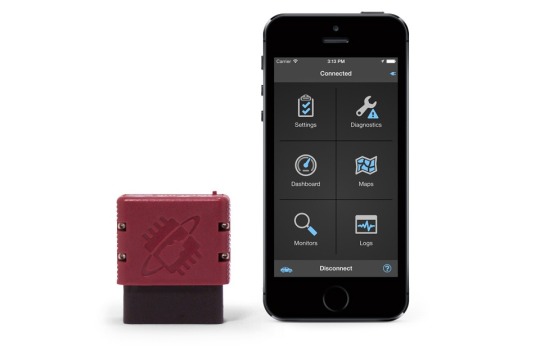
Free OBDwiz software and OBDLink app included!
Up to 3x faster than other adapters
Supports SW CAN & MS CAN protocols. With enhanced diagnostics, these protocols provide access to many additional vehicle modules.
Small form factor that won’t obstruct driver legroom.
Hack-Proof – Cutting-edge security scheme virtually eliminates the risk of unauthorized access.
BatterySaver Technology – innovative sleep function lets you leave it plugged in without danger of draining your car’s battery.
Read & Clear Check Engine light – Check diagnostic codes yourself and make informed repair decisions.
Works on PC’s, Smart Phones, and Tablets – Turn your laptop, iPhone, or Android device into a sophisticated diagnostics tool and performance monitor.
Free OBD2 Diagnostic Software - OBDwiz, OBDLink Android app and OBDLink iOS app are included free of charge!
Works on a wider range of vehicles – OBDLink’s advanced algorithm enables MX+ to connect to more OBDII-compliant makes & models than any other scan tool.
Peace of Mind – Covered by a 3-year warranty & 90-day money-back guarantee.
OBDLink ® MX is a pocket-size Wi-Fi OBD-II adapter for all OBD-II compliant vehicles (except hybrid or electric vehicles). It can be used as a diagnostic scan tool, trip computer, logger, and real-time performance monitor. Its BatterySaver™ sleep mode allows the adapter to stay plugged in continually, without draining the vehicle’s battery.
Legislated OBD protocols
OBDLink scan tools, app, and diagnostic software, designed for iPhone, Android and Windows. Diagnose and erase trouble codes, measure performance, and more. OBDLink SX USB (with Android 3.1 or newer).The app will NOT work with any other brand of OBD adapter. Turn your phone or tablet into a full-fledged diagnostic scan tool: read diagnostic.
ISO15765-4 (CAN)
ISO14230-4 (Keyword Protocol 2000)
ISO9141-2 (Asian, European, Chrysler vehicles)
J1850 VPW (GM vehicles)
J1850 PWM (Ford vehicles)
Additional OBD protocols
Single Wire CAN (GM)
Medium Speed CAN (Ford)
Operating Specifications
Obdlink Iphone

Dimensions: 1.97 x 1.77 x 0.91 in (50 x 45 x 23 mm)
Weight: 1.2 oz (34.02 g)
Operating Voltage: 8-18V DC
Operating Temperature: -4º to 131º F (-20º to 55º C)
Operating Humidity 10 to 85% (non-condensing)
Package contents
OBDLink MX+ Bluetooth Adapter
Quick Start Guide
License key for OBDwiz software is provided when registering within OBDwiz
OBDLink MX+ works with all 1996 & newer model year cars and light trucks sold in the U.S., including all American, European, and Asian vehicles. Live outside the U.S.? Most newer non-U.S. vehicles are complaint with the OBDII standards. Check here to verify that OBDLink MX+ will work with your non-U.S. vehicle. If you have any doubts, we do offer a 90 day, no-hassle money-back guarantee!
Obdlink App Cost
This product comes with an unconditional 90-day money-back guarantee and a 3 year warranty.
0 notes
Text
A Case Report of Chemical Pneumonia after Trans-Arterial Chemoembolization for Hepatocellular Carcinoma during Covid-19 Outbrea by Rimondi
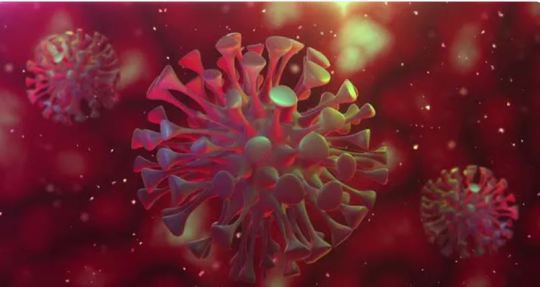
Abstract
Due to the dramatic outbreak of Severe Acute Respiratory Syndrome Coronavirus-2 (SARS-CoV-2) infection in Italy, management of patients with Hepatocellular Carcinoma (HCC) has become challenging. Palliative treatments, such as transarterial chemoembolization (TACE) and radioembolization (TARE) have been maintained in selected patients, in order to optimize the risk-benefit ratio, by minimizing risks related to hospitalization.
Although considered safe procedures, these palliative treatments are associated with generally underestimated complications.
Here we report the case of a 78-year-old patient who developed respiratory failure after TACE procedure while being hospitalized during Coronavirus Disease 2019 (COVID19) outbreak. Clinical decisions and outcomes are therefore described.
Keywords: TACE; Chemical Pneumonia; Hepatocellular Carcinoma; COVID 19; Respiratory Failure
Abbreviations: SARS-CoV-2: Severe Acute Respiratory Coronavirus-2; HCC: Hepatocellular Carcinoma; TACE: Transarterial Chemoembolization; TARE: Transarterial Radioembolization; CPT: Child-Pugh Turcotte; HCV: Hepatitis C Virus; LUF: Lipiodol Ultrafluid; EPI: Epirubicin; CT: Computed Tomography; AFP: Alpha-fetoprotein; S: Segment; Sat: Saturation; COVID-19: Coronavirus Disease
Introduction
A 78-year-old woman was diagnosed with multifocal recurrence of a previously resected HCC on compensated (CPT-A) cirrhosis due to untreated Hepatitis C Virus (HCV) infection. She could not benefit from Direct-Acting Antivirals (DAA), since in Italy treatment is currently not reimbursed in patients with active HCC outside liver transplant waiting list. She had no comorbidities, and TACE was planned by our multidisciplinary team. After the first c-TACE [Lipiodol ultrafluid (LUF) plus Epirubicin (EPI)], abdomen CT-scan showed three residual nodules [11 mm in liver segment (S) 7, 10 mm in S5 and 10 mm in S6] with typical HCC pattern and Alpha-Fetoprotein (AFP) lowering from 260 to 85 ng/mL. The next TACE procedure occurred to be planned during peaking Italian SARS-CoV-2 outbreak at the very beginning of April 2020. The patient was still motivated to undertake HCC treatment, aware of the risks associated with current pandemic, albeit mitigated by protocols implemented in our Coronavirus disease (COVID-19)-free department. She underwent two SARS-CoV-2 nasopharyngeal swabs, 5 and 3 days before hospital admission, which both tested negative. At admission, blood tests showed mildly increased liver enzymes, however with normal bilirubin and liver function tests.
Case Report
After checking S7, S6 and S5 lesions vascular supply, the hypertrophic right inferior phrenic artery was selectively catheterized, and LUF 2 mg emulsified with EPI 5 mg was injected (Figures 1a,1b). TACE procedure was immediately interrupted due to appearance of not previously described pulmonary shunts (Figure 1c).
Thereafter, HCCs were treated with standard doses of LUF and EPI through the right hepatic artery. No adverse events related to TACE were recorded, during and immediately after the procedure. Twenty hours later, the patient presented with fever (38.0°C) and desaturation (SatO2 78%), in absence of pronounced dyspnea. Arterial blood gas analysis showed respiratory failure with pH 7.40, pO2 34, pCO2 49, SpO2 65%, lactates 1.2, P/F 161. Differential diagnosis was made. Acute Respiratory Failure should prompt a rapid evaluation and physicians are required to quickly rule out the most common acute pulmonary pathologies. Acquired infectious pneumonia is quite a common cause of rapid deteriorating respiratory function and acute respiratory distress syndrome. Among infectious pneumonia, due to current high incidence scenario with rapidly spreading intra-hospital potential outbreaks, COVID-19 should be the first pathology to be excluded in order to keep infected patients out of SARS-CoV-2 free departments and, on the other hand, to prevent SARS-CoV-2 negative patients to become ill. Although our patient had been tested for COVID-19 before hospital admission, high rates of false negative RT-PCR tests should suggest to keep a low threshold for re-testing, especially if we take into consideration our subject’s clinical presentation with fever, acute respiratory failure and the absence of frank dyspnea which are all clinical characteristics of acute SARS-CoV-2 infection.Also, in this specific case, pulmonary venous thromboembolism should be suspected given the sudden desaturation and considering the hypercoagulable state due to active cancer, the post-procedural bed confinement and the recent vascular maneuvers.
Furthermore, the accidental injection of LUF + EPI into not previously known pulmonary shunt should raise the suspicion of possible adverse events related to the injection of relatively high doses of iodinated contrast agents into pulmonary parenchyma thus provoking chemical pneumonia. Oxygen support was then delivered (VM 50% 12 l/min), with benefit. Blood tests were repeated and they revealed unchanged white blood cells count (3,780/mm3), with relatively low lymphocytes (10%); hemoglobin, C-Reactive Protein, D-Dimer and ferritin were normal.
Chest X-ray showed an interstitial lung reinforcement and a possible basal right pneumonia. Due to parallel high incidence clinical scenario and the radiologic findings, a third SARS-CoV-2 nasopharyngeal swab was obtained, which still tested negative. To rule out the other possible complications, the patient underwent chest CT-scan which revealed the presence of radio-opaque material within the apical and posterior segment of the lower right lobe, that was suggestive for lipiodol accumulation (Figures 2a,2b). Liver accumulation were as well noted (Figure 2c). Right basal pneumonia was not confirmed, despite the presence of mild pleural effusion and lobar dystelectasia. Both antibiotics and low-molecular-weight heparin prophylaxis were started, and patient’s respiratory function was closely monitored. The patient experienced a progressive improvement in respiratory function with oxygen weaning after 7 days, and was discharged without sequelae.
Figure 1: Angiographic study of the celiac trunk showing the hypertrophic right inferior phrenic artery (a), which appear to supply the upper liver segments on the selective study, and two lesions (b); note the pulmonary shunts after LUF injection (c).
Figure 2: Chest CT-scan showing the presence of parenchymal dystelectasia (a) and radio-opaque material within the apical and posterior segment of the lower right lobe (b), as well as liver accumulation (c).
Discussion
Here, we described a case of chemical pneumonia in a patient affected by HCC undergoing loco-regional treatment with TACE. Due to her high motivation, the absence of major comorbidities, as well as the decrease in AFP values following previous HCC treatments, the patient was hospitalized despite several difficulties related to the concomitant peak of SARS-CoV-2 spread in Milan, Italy [1]. In order to minimize the risk of nosocomial infection, she had previously undergone two SARS-CoV-2 nasopharyngeal swabs, which tested negative. However, the onset of desaturation in absence of respiratory symptoms led physicians to reconsider COVID-19, due to the current high-risk clinical scenario. In fact, it has been recognized that several factors may limit molecular assays accuracy [2], with false negative rates of nearly 30%. Moreover, SARS-CoV-2 incubation period is crucial when interpreting swab results, thus making patient history collection essential, especially in the current “COVID-19 era” [3]. Also, the presence of liver diseases may increase the risk of unfavorable SARS-CoV-2 infection [4].
Our patient reported a rare complication of TACE, ranging between 0.05%-4.5% [5]. In fact, patients undergoing multiple TACE can develop collateral vessels, arising from non-hepatic arteries. Interestingly, S7 and S8 can be supplied by the right inferior phrenic artery, which accounts for 62-83% of extrahepatic collaterals. Moreover, naturally present pulmonary shunts could significantly increase. Although demonstrated that in these cases TACE remains a safe procedure, infused ethiodized oils or chemotherapeutic agents could shunt into lung vessels, with chemical injury being further worsened by the consequent inflammatory response. Despite both LUF and EPI had been injected at lower than standard doses following the identification of previously unrecognized pulmonary shunts, their quantity was probably enough to cause subsequent pulmonary inflammation and respiratory failure.
Although is strongly advisable to “think of horses not zebras, when you hear hoof beats”, this case reminds us to keep an open-minded approach even in specific pandemic high incidence scenarios.
Funding
This research received no specific grant from any funding agency in the public, commercial, or not-for-profit sectors.
Ethical Approval
Approval was obtained from the local ethics committee.
Consent for Publication
The Author transfers to Springer the non-exclusive publication rights and he/she warrants that his/her contribution is original and that he/she has full power to make this grant. The author signs for and accepts responsibility for releasing this material on behalf of any and all co-authors.
Contributors
We were all involved in caring, treating, diagnosing and providing follow-up for the patient. RDA and AR wrote the manuscript; AR, IB and MI collected data; SC was responsible for Radiology; PL revised the paper. Written consent for publication was obtained from the patient.
For more information about Article : https://ijclinmedcasereports.com/
https://ijclinmedcasereports.com/ijcmcr-cr-id-00107/
https://ijclinmedcasereports.com/pdf/IJCMCR-CR-00107.pdf
#TACE#Chemical Pneumonia#Hepatocellular Carcinoma#COVID 19#Respiratory Failure#Rimondi#IJCMCR#clinical studies
0 notes
Text
What’s The Big Deal With iMessage? Check Out the Ultimate Guide!
The “Green Bubble” fact is back in the headlines right now. After several leaked accusations that Apple takes advantage of its iMessage platform to exert “pushing and bullying as a way to sell more products.” iMessage started in 2011, and you will see examples of memes dating back and anti-green bubble tweets just about as far as the app has kept going. It is hardly a new face popping up in many pop culture hints for years. Many readers might think about what the iMessage confusion is all about, along with why they keep hearing about a thing they never use. In this, we will discuss what the iMessage fuss exactly is!

Blue And Green Bubbles – Explained!
If you are going to catch up on the saga right now, when you send text, photos, and videos to other iMessage users, Apple’s default messaging app shows a blue bubble. These messages use your mobile data or wi-fi connection but, otherwise free to receive and send.
The app shows green bubbles when we communicate with non-iMessage users, like Android users, and get back to SMS/MMS for text messages, images, etc. While SMS (short message service) is continuously unlimited in the USA (United States of America) and European phone plans, it is not about the entire world. So, A few iPhone users might have to pay for sending text messages to their Android friends. It depends on their carrier limits. Media may also be crammed when sent as MMS.
If we communicate from iMessage to iMessage, it has its advantages. Messages are encrypted, and the messaging app also shows notifications while reading and typing. On another side, Blue bubble iMessage customers take advantage of features you may identify from WhatsApp and other services, while green bubble does not. In comparison, unharmed sounding on its own. This fewer feature parity has inspired some iPhone customers to rebuke their green bubble contacts.
Does iMessage Fit in The Big Picture? If Yes, Where?
To put our discussion in some plan, iMessage is a little far from the most highly used message app on a global level. The title belongs to WhatsApp, with approximately 2 billion monthly active users (in October 2021), followed by WeChat (1.2 billion), Facebook Messenger (1.3 billion), Q.Q. (591 million), Telegram (550 million), and Snapchat (538 million). Unluckily, no unlimited data for iMessage exists here. Some calculations advise close to 1.3 billion users. But as iMessage, the default SMS app in the iPhone, any user that gets just plain old spam or a text message could be counted in those numbers.
Trends from November 2021 approved a diverse range of using messaging apps in the world. We also know that WhatsApp claims the most use in 53 countries, expanding in India, Europe, and South Africa. In Chine, WeChat is the platform of choice. As well Viber is very popular in Greece, Bulgaria, and Ukraine, and Telegram is a highly used app in Spain, Argentina, and Israel. Even in the U.S. (United States) that is the home of the iPhone, Facebook messenger is the most famous messaging app there. According to a survey from June 2020, 32% of American adults used Facebook messenger, 20% used Instagram, 17% of adults used iMessage, and the rest 12% used WhatsApp. A famous universal app such as WeChat, Telegram, and Viber barely registered with 2% each.
iMessage – Teenage Sensation of United States!
The fact to understand the green bubble phenomenon has found in a specific survey that was organized by Consumer Intelligence Research Partners. This research highlights the massive boost in recent U.S. iPhone sales in the 18-24 age group of adults. For example, Gen Z iPhone acceptance has jumped from 47% (in 2018) to 74% (in 2021). Internal research of Apple claims that iPhone users primarily use iMessage that is around 85% of users. Still, iMessage American users continue to grow. This is mainly so in the younger age group.
Conclusion
In the above guide, we have discussed iMessage. Also, we have learned what green and blue bubbles exactly are and their specifications. According to the survey, we are now aware of every messaging app that countries adults are using. Mainly, iMessage is overgrowing among the American people.
Source:https://act4office.co.uk/whats-the-big-deal-with-imessage-check-out-the-ultimate-guide/
0 notes
Text

【阿波的窩 Apo's house】《Strawberry 草莓週邊商品及展覽佈置、資訊、搭配》《Chocolate 巧克力週邊商品及展覽佈置》日本進口 Meiji 明治 Strawberry 草莓 夾餡巧克力 26枚盒裝 全新滿盒 展示空盒
食用方式:正常食用
適用族群:一般族群
製造日期:詳見外包裝
保存期限:12個月
淨重:120公克
國際條碼:4902777026329
內容數量:單片獨立包裝,26片正常版包裝
商品尺吋:長128(mm) *寬90(mm) *高22(mm)
原產地:日本靜岡縣
成分:砂糖、植物油(棕櫚油、牛油樹油、伊利伯脂、婆羅雙樹油、葵花籽油)、全脂奶粉、乳糖、可可塊、可可脂、調製乳製品(牛奶、乳糖、砂糖、脫脂奶粉)、草莓粉(草莓、乳脂、棕櫚油)、海藻糖、脫脂奶粉、大豆卵磷脂、蘋果粉(糊精、濃縮蘋果果汁) 、脂肪酸蔗糖酯、香料、調味劑(檸檬酸、DL-蘋果酸)、紅趜色素
保存方式:請將產品存放28度以下乾涼處,開封後請儘早食用
進口代理商:正暉股份有限公司
服務專線:0800-061169
地址:台北市南港區三重路19-2號11樓
食品業者登錄字號(須同商品中文標籤上的廠商資料) :A-184293851-00000-8
產品責任保險字號1: 0525字第20AML0000420號
過敏原註記:本產品含有牛奶、大豆、堅果類及其製品
營養標示:
每一份量4.6公克
本包裝26份
每份/每100公克
熱量37/592大卡、蛋白質0.3/5.7公克、脂肪1.9/40.6公克、飽和脂肪1.2/25.7公克、反式脂肪0公克、碳水化合物2.3/50.9公克、糖2.1/46公克、鈉2/44毫克
巧克力(英語:Chocolate)原產自中美洲,是以可可粉做為主料的混合型食品。
「巧克力」一詞來自納瓦特爾語單詞「xocolatl」,意思為「苦水」。
主要原料可可豆(Cacao),產於赤道南北緯線18度以內狹長地帶。
巧克力含有豐富的鐵、鈣、鎂、鉀、維生素A、維生素C 和可可鹼,由於多添加糖分,因此具有高能量值。
由天然成分製作的巧克力對人類之外的許多動物有毒(例如: 狗),但對人類無毒、且其中微量的可可鹼是健康的反鎮靜成分。故食用有助提升精神,增強興奮等功效。可可含有苯乙胺,坊間流傳能使人有戀愛感覺的流言[5]。
巧克力由可可豆加工而成,主要有效成分是高脂肪的可可脂與低脂肪的可可塊。
可可鹼主要存在於可可塊中。可可脂有六種結晶形式,依各種結晶形式比例不同,熔點在37攝氏度左右至18攝氏度左右不等。
巧克力按組成的不同而被分為不同的產品,如黑巧克力、牛奶巧克力、果料巧克力、堅果巧克力、酒芯巧克力、香料巧克力、松露巧克力等等。
在歐美的眾多國家中,有許多巧克力的百年老店、博物館和巧克力公園,介紹巧克力的製作、技術、人物和知名的巧克力品牌等。
與巧克力有關的節日有許多,如情人節、聖誕節、感恩節、復活節等。
明治株式會社(日語:株式会社 明治/めいじ meiji,英語:Meiji Co., Ltd.)是日本主要的食品公司之一,且是明治控股的完全子公司。
業務範圍包括菓子、牛奶、乳製品和非處方藥的生產及銷售。
企業標語為「明天更加美味」(明日をもっとおいしく)。
2016年明治集團成立100週年,公司總部搬遷至東京都中央區京橋。
2017年,明治迎來成立100週年。
原公司名為明治乳業。隨著明治集團的重組,2011年(平成23年)4月1日,開始接管原來隸屬於明治製菓(現為Meiji Seika Pharma)菓子、飲料、食品、非處方藥等部門的事業,同時也接收了「meiji.co.jp」的網路域名,並把公司名稱改為現在的「明治」。
公司的每個部門都被稱為「單位」(ユニット),由菓子、乳製品、健康營養、海外四個「單位」組成。
可以幫我分享宣傳唷~
Fb搜尋【阿波的窩 Apo's house】加入粉絲專頁喲!
如果要購買的人,請在下方留言喲!先搶先贏,買不到的人,就先跟你們說抱歉囉!啾咪~
#阿波的窩 Apo's house
#Strawberry
#草莓週邊商品及展覽佈置、資訊、搭配
#Chocolate
#巧克力週邊商品及展覽佈置
#日本進口
#Meiji
#明治
#草莓
#夾餡巧克力
#26枚
#盒裝
#全新
#滿盒
#展示
#空盒
#阿波只賣自己喜歡的品牌和樣式
#堅持沒錢不買,也不買盜版
#不怕賣不掉,怕你買不到
#商品售出,恕不退換貨
相關連結:
https://www.facebook.com/%E9%98%BF%E6%B3%A2%E7%9A%84%E7%AA%A9apos-house-662554480442884/photos/a.3152676124764028/5026839420681013
Chocolate 巧克力 維基百科
https://zh.wikipedia.org/wiki/%E5%B7%A7%E5%85%8B%E5%8A%9B
明治 (企業)維基百科
https://zh.wikipedia.org/wiki/%E6%98%8E%E6%B2%BB_(%E4%BC%81%E6%A5%AD)
【阿波的窩 Apo's house】集點卡名片使用說明:
1.本店販賣類別:影音商品、服飾、夾腳拖鞋等。
2.本店販賣商品皆為正版特惠商品,恕不退換。
3.消費1000元可集1點,集滿10點,可兌換限量禮品1份。
4.消費時請帶此卡,依消費金額蓄章,未帶恕不補章。
5.本集點卡不得兌換現金或其他使用!
6.本店保有活動更改及終止之權利。
0 notes
Text
Global Amorphous Core Transformers Market Size, Manufacturers, Supply Chain, Sales Channel and Clients, 2021-2027
Amorphous metal is a solid metallic material with high magnetic conductivity that provides energy saving performance. The metal atoms are disordered and arranged in non-crystal way. Amorphous metal is different from conventional steel because is easier to be magnetized and de-magnetized. Amorphous metal sheet is 0.02 mm thick, which is about 1/10 of conventional silicon steel. An amorphous core transformer is a highly efficient electrical transformer, which has a magnetic core comprised of ferromagnetic amorphous metal alloyed with a glass former. This ribbon of steel is wound to form the transformers core. The materials used in amorphous core transformers have high magnetic susceptibility, low coercivity and high electrical resistance.
Global Amorphous Core Transformers key players include Hitachi Industrial Equipment Systems, ABB, Siemens, etc. Global top three manufacturers hold a share over 20%.
Asia-Pacific is the largest market, with a share over 45%, followed by Americas, and Europe, both have a share about 40 percent.
Download FREE Sample of this Report @ https://www.grandresearchstore.com/report-sample/global-amorphous-core-transformers-2021-2027-793
In terms of product, Oil-Immersed the largest segment, with a share over 85%. And in terms of application, the largest application is Utility Companies, followed by Building, Factory, etc.
Market Analysis and Insights: Global Amorphous Core Transformers Market
In 2020, the global Amorphous Core Transformers market size was US$ 2601 million and it is expected to reach US$ 3519.3 million by the end of 2027, with a CAGR of 4.4% during 2021-2027.
Global Amorphous Core Transformers Scope and Market Size
Amorphous Core Transformers market is segmented by region, by country, company, type, application and by sales channels. Players, stakeholders, and other participants in the global Amorphous Core Transformers market will be able to gain the upper hand as they use the report as a powerful resource. The segmental analysis focuses on sales, revenue and forecast by region, by country, company, type, application and by sales channels for the period 2016-2027.
Segment by Type, the Amorphous Core Transformers market is segmented into
Oil-Immersed Amorphous Core Transformers
Dry-Type Amorphous Core Transformers
Segment by Application, the Amorphous Core Transformers market is segmented into
Factory
Building
Utility Companies
Others
Regional and Country-level Analysis:
North America
United States
Canada
Asia-Pacific
China
Japan
South Korea
India
Southeast Asia
Australia
Rest of Asia-Pacific
Europe
Germany
France
U.K.
Italy
Russia
Nordic Countries
Rest of Europe
Latin America
Mexico
Brazil
Rest of Latin America
Middle East & Africa
Turkey
Saudi Arabia
UAE
Rest of MEA
Competitive Landscape and Amorphous Core Transformers Market Share Analysis
Amorphous Core Transformers market competitive landscape provides details and data information by companies. The report offers comprehensive analysis and accurate statistics on revenue by the player for the period 2016-2021. It also offers detailed analysis supported by reliable statistics on sale and revenue by players for the period 2016-2021. Details included are company description, major business, Amorphous Core Transformers product introduction, recent developments, Amorphous Core Transformers sales by region, type, application and by sales channel.
The major companies include:
Hitachi Industrial Equipment Systems
ABB
Siemens
State Grid Yingda (Zhixin Electric)
Toshiba Transmission & Distribution Systems
CG Global
CREAT
Sunten
Yangdong Electric
TBEA
Eaglerise
TATUNG
Henan Longxiang Electrical
Howard Industries
Powerstar
Get the Complete Report & TOC @ https://www.grandresearchstore.com/energy-and-natural-resources/global-amorphous-core-transformers-2021-2027-793
Table of content
1 Study Coverage
1.1 Amorphous Core Transformers Product Introduction
1.2 Market by Type
1.2.1 Global Amorphous Core Transformers Market Size Growth Rate by Type
1.2.2 Oil-Immersed Amorphous Core Transformers
1.2.3 Dry-Type Amorphous Core Transformers
1.3 Market by Application
1.3.1 Global Amorphous Core Transformers Market Size Growth Rate by Application
1.3.2 Factory
1.3.3 Building
1.3.4 Utility Companies
1.3.5 Others
1.4 Study Objectives
1.5 Years Considered
2 Executive Summary
2.1 Global Amorphous Core Transformers Market Size Estimates and Forecasts
2.1.1 Global Amorphous Core Transformers Revenue 2016-2027
2.1.2 Global Amorphous Core Transformers Sales 2016-2027
2.2 Amorphous Core Transformers Market Size by Region: 2021 Versus 2027
2.3 Amorphous Core Transformers Sales by Region (2016-2027)
2.3.1 Global Amorphous Core Transformers Sales by Region: 2016-2021
2.3.2 Global Amorphous Core Transformers Sales Forecast by Region (2022-2027)
2.3.3 Global Amorphous Core Transformers Sales Market Share by Region (2016-2027)
2.4 Amorphous Core Transformers Market Estimates and Projections by Region (2022-2027)
2.4.1 Global Amorphous Core Transformers Revenue by Region: 2016-2021
2.4.2 Global Amorphous Core Transformers Revenue Forecast by Region (2022-2027)
2.4.3 Global Amorphous Core Transf
CONTACT US:
276 5th Avenue, New York , NY 10001,United States
International: (+1) 646 781 7170 / +91 8087042414
Email: [email protected]
Follow Us On linkedin :- https://www.linkedin.com/company/grand-research-store/
0 notes